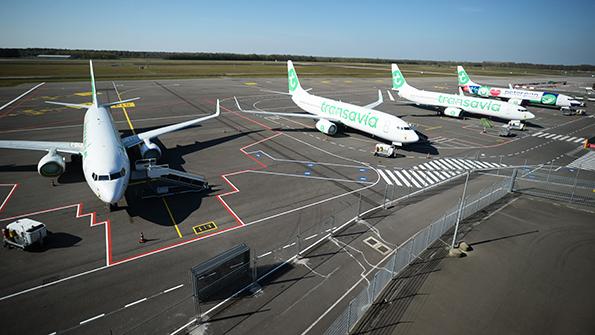COVID-19后MRO市场将如何复苏

尽管由于COVID-19病毒的流行,准确预测MRO市场的前景(即使是在今年年底)并非易事,但以下这些最新的数据和实际情况可能暗示了MRO市场的前景。
While accurately predicting what the MRO market will look like, even at the end of this year, is tricky due to the COVID-19 pandemic, these recent figures and facts could hint at what it will be.
在如今这样现金短缺的日子里,大型合并并没有发生:波音和巴西航空工业公司,以及Hexcel和伍德沃德,都取消了他们计划中的交易。然而,一站式服务的概念并没有消失,因此MRO整合仍将继续。
Big mergers during these cash-crunch days are not happening: Boeing and Embraer, as well as Hexcel and Woodward, both called off their planned deals. However, the one-stop-shop concept isn’t going away, so MRO consolidation will continue.
停放的飞机数量可能已经达到或接近高峰。航空周刊的机队探索数据显示,有近16000架飞机停飞,约3500架飞机处于停飞/备用状态(7天内飞行1-2天)。空客A320和波音737共有9300架,这意味着目前停飞的CFM56比任何其他类型的发动机都要多。
The number of parked aircraft is probably at or near its peak. Aviation Week Network’s Fleet Discovery data shows nearly 16,000 aircraft are parked and about 3,500 are in parked/reserve status (flying 1-2 days during a 7-day period). Airbus A320s and Boeing 737s comprise 9,300 of that total, meaning that more CFM56s are parked than any other engine type by far.
由于航班减少,飞机腹仓运费减少,这为暂时在其客舱内运输货物的航空公司带来了新的客舱改造机会。诸如HAECO机舱解决方案的公司正在设计产品,以在座椅上或座椅之间放置货物,或卸下座椅以为地板上的“货盘”单元腾出空间。
A decrease in aircraft belly freight due to fewer flights is leading to new opportunities for cabin modifications as airlines temporarily carry freight in their cabins. Companies such as HAECO Cabin Solutions are designing products to place freight on or between seats, or removing seats to make room for a “palletized” unit on the floor.
航空旅行很可能会以缓慢、渐进的速度恢复,而不是V形反转。这意味着并非所有的飞机和发动机都会返厂维修。当航空公司和出租人决定他们的飞机和发动机资产是保留全部资产还是拆成零配件更合算时,拆机量将会增加。这将产生更多二手的可用材料。
Airline travel will most likely recover at a slow, gradual rate, rather than a V-shaped spike. That means not all of the aircraft and engines will return. As airlines and lessors determine whether their aircraft and engine assets are worth more remaining whole or as pieces, teardowns will increase. This will lead to more used serviceable material.
但是,在出行限制放宽之前,该行业面临着从人到零件的各种物流问题。
Until travel restrictions ease, however, the industry faces all sorts of logistics problems—from people to parts.
例如,由于旅行限制和隔离,出租人的预定回报被耽搁。他们需要寻找当地资源提供维护、检查飞机并签署所需文件。Vedder Price的合伙人Bill Gibson说:“这种延误带来的风险是,与后续运营商签订的下一份租约中的最后期限已过,而后续租约将被终止。”
For instance, lessors’ scheduled returns are being held up because of travel restrictions and quarantines. They need to find local resources to perform maintenance, inspect the aircraft and sign the required documents. “This delay creates the risk that a long-stop date in the next lease with a follow-on operator is passed, and the follow-on lease is terminated,” says Bill Gibson, a partner at Vedder Price.
好的一面是,帮助航空公司和售后服务公司度过这场危机的办法之一是远程协作工具。在4月22日的一次关于MRO合规性的《航空周刊》网络研讨会上,67%的参与者说他们在COVID-19危机之前就已经研究过远程协作工具,19%的人说他们在那以后开始这样做。
On the bright side, one thing that is helping airlines and aftermarket companies through this crisis is remote collaboration tools. During an Aviation Week webinar April 22 on MRO compliance, 67% of participants said they had looked into remote collaboration tools before the COVID-19 crisis and 19% said they had done so since.
这些工具和AAR正在试验的其他工具将使MRO行业更加高效。
These tools and others—such as what AAR is piloting—will make the MRO industry more efficient.
公司试图保留现金是可以理解的,但在这种情况下,必须关注你的业务基本面,这样你的公司才能满足客户的需求和期望,并为未来的后COVID-19时期做好准备,因为市场会复苏。过程可能需要几年时间,到那时情况也会有所不同,但它终究会反弹。
Companies are understandably trying to preserve their cash, but in these times it is important to focus on your business fundamentals so your company will meet customer needs and expectations and be positioned for the future post-COVID-19—because the market will recover. It will look different and it might take a few years, but it will rebound.
这条消息是Lee Ann Shay在Inside MRO 杂志发表的文章。《Inside MRO》杂志研究商用飞机MRO领域的最新趋势和技术。每期月刊都提供了做出关键技术、业务和运营决策所需的信息。此外,订阅者每月还会收到一期《Aviation Week & Space Technology》杂志,该杂志是业内新兴技术分析和见解的主要来源。点击此处查看有关Inside MRO更多消息。